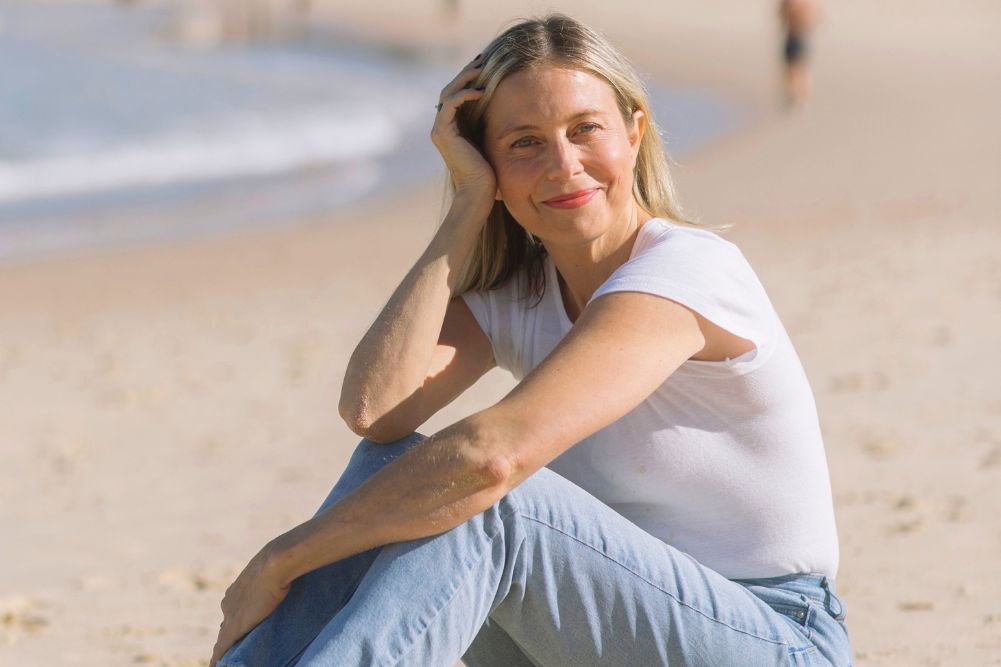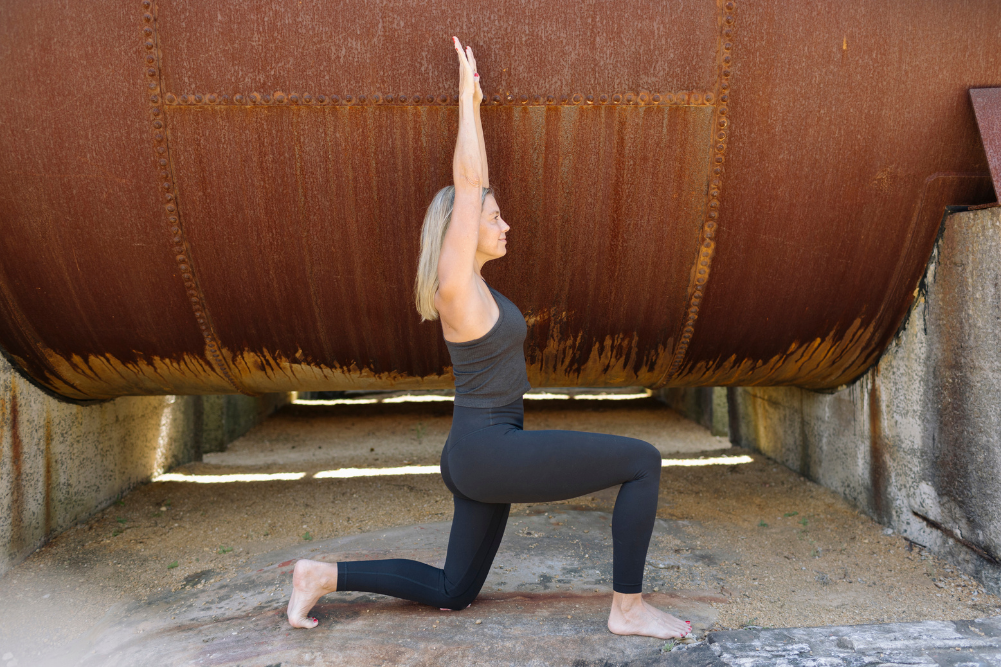Putting your yoga practice to practise in everyday life
In times of challenge we need to lean into our yoga practice with malleability so we can return home again to a wholeness of self.
There’s a well-known saying in yoga that the pose begins when you want to get out of it. Perhaps the same could be said for life — that our practice really begins in moments of deep challenge and when we would prefer to be anywhere else but here.
As the impact of the global lockdown began to take hold, we were forced to close the doors to something we have been creating for 14 years — our yoga studios. We had to send our students, teachers and staff home. As a result we were taking away people’s daily yoga ritual, putting my teachers and staff in painful financial positions, not to mention facing the prospect of losing everything we had built. I felt fear, anger, sadness and stress. Add to the mix home schooling my two kids and juggling saxophone practice, deciphering maths and Italian lessons at home while trying to adapt our whole business online — needless to say it was a real storm and it got pretty messy at times. The tension internally was extreme and it’s been one of the most anxious chapters of my life.
In testing times we need our practice more than ever — and we need it to be flexible. I think we can agree that the only constant in life is change, so how can we have a practice that helps us surf the changing tides of life?
Meeting yourself where you’re at
I had to use my practice to meet me exactly where I was. To gently peel me back from the edge and allow it to be a soft place to land within me where I could begin to heal from the shock. And then bolster myself so we could adapt and change to steer our family and beloved business through the most challenging time.
In testing times we need our practice more than ever — and we need it to be flexible.
It’s all very well when we have good health, we feel strong and we’re in love with a great career and stabile finances, but what about when that’s not the case? What happens when our life begins to unravel? When we are unwell, out of work and facing great challenges either personally or globally? This is when it’s especially useful to have a practice to lean into for support — something that can provide a ballast to lean into and bring us home again to a wholeness of self.
One of the most celebrated benefits of a long-term practice is equanimity — calmness or composure, especially in a challenging situation — and this is revered and encouraged in many ancient wisdom traditions; using this exact moment as a doorway into presence and peace. The Buddhist tradition uses the word vipassana — noticing the moment as it happens with relaxed and alert attention. The yogis use the word sattva — receiving the moment with calm and awake attention. Either way, we are encouraged to experience the moment with radical inclusiveness, encompassing all that unfolds moment to moment and the full spectrum of human emotions.
A point came for me in my life when I realised my daily practice wasn’t a luxury or something I wanted to do to tick off the New Year’s resolution list (although it did sit there for a few years before becoming a reality), but instead a necessary practice because my system needed it. I depend on that time in the morning to steady my body and mind before the day begins in earnest. To collect and gather the fractured parts of me and ensure that I head into the day’s responsibilities feeling whole. This then allows me to be the most present mother, partner, friend and business owner I can be, and that’s important to me. How we are in the world is our greatest gift for healing the world. So I remind myself, don’t wait until things have aligned — just dive in and start where I am.
There’s that sweet saying: “The ego says, ‘When everything falls into place, I will find peace.’ The soul says, ‘Find peace and everything will fall into place.’” Putting this to practise in everyday life can help us be at ease with things as they are.
Finding malleability in your practice
So firstly, we need to establish for our self that our practice is a non-negotiable pillar of mental and physical health — something we do to maintain inner peace. Then, we need to allow it to be flexible. It will look different from day to day. During this recent lockdown, with both kids at home, I had to allow my practice to be very malleable. My practice in the morning includes sounds from the family. My yoga asana practice is very different than if I had the house to myself. I hear the kids and husband during my morning sit, going about their daily rhythms. Sometimes during my asana, they will burst in and ask me a question, ask for help mediating an argument or lie with me for a bit. If I was being regimented about my space this may cause great irritation, but I try to bring yoga to my life and my life to yoga. So how I am with them when they interrupt is an extension of my practice; what good is our yoga and meditation practice if it’s reserved only for our little yoga mat or meditation cushion?
A home practice also keeps it very real. We may have kids outside the room, flatmates in the kitchen; we may be squeezed between the bed and a wall, or practising in the garage or garden. All of these variables invite us to stretch the bandwidth of our practice. Having the arms of our practice long enough to wrap around the whole situation, to include the noise, the dusty floor, the washing that needs doing and all that vies for our attention — to include the distractions and our frustrations as the doorway in. Sometimes, I say to my long list of to-dos: “Not now, I am practising” as a way of reminding myself that right now I am here with my body and breath. It’s a helpful way to master the mind in the moment.
And that becomes useful in everyday moments. For example, today at home, my son in practising saxophone and my daughter is trying to learn (online) an aerobics routine for PE. My emails are building up, my phone is pinging – the noise in the house is so very loud. At times like this, it’s so extreme that it borders on funny. Thoughts of those videos online of mums teaching their kids about fractions for home school while pouring white wine into a glass come to mind … But seriously, this is a time where we are being taken to the brink. We need to be able to put our practice to practise and remind ourselves to come back to our centre in often un-centred moments. This is why we practise — so that we can put the insights we learn on the mat to use in the fieldwork of life.
We need to be able to put our practice to practise and remind ourselves to come back to our centre in often un-centred moments. This is why we practise — so that we can put the insights we learn on the mat to use in the fieldwork of life.
Flexibility is important too, as we don’t want our practice to imprison us or to bind us with rules and demands of what’s right and wrong. We don’t need yet another area of our life where we are comparing and judging ourselves. Once we have used our will to begin our practice, we want it to be friendly and meet us where we are. It needs to be a place we can climb into and simply be ourselves.
As Aadil Palkhivala says so beautifully: “True yoga is not about the shape of your body, but the shape of your life. Yoga is not to be performed; yoga is to be lived. Yoga doesn’t care about what you have been; yoga cares about the person you are becoming. Yoga is designed for a vast and profound purpose, and for it to be truly called yoga, its essence must be embodied.”
Setting up an altar or a little sacred space in your house can help. It’s a way to return to and remember the sacred within us. If that doesn’t resonate, however, don’t let it put you off, as it’s not the only way to find space. I remember when the kids were young and we lived in what felt like the smallest house in Sydney, we didn’t have a view or a light-filled yoga sanctuary I could unroll my mat in. I was squeezed between the kids’ drying laundry rack, Lego and other toys. Noise from outside permeated my awareness and yet my practice was (after a while of settling in) vast and still. This reminded me that the most important altar is the one I reveal within me; the sacred ground within us all. So altar or no altar, let the real pilgrimage be from the fractured parts of self to the stillness within you.
Ultimately, we want the tendrils of our practice to extend into life and eventually wrap the very edges of it with awareness, and for the benefits of the practice to help us every day in ordinary moments.








